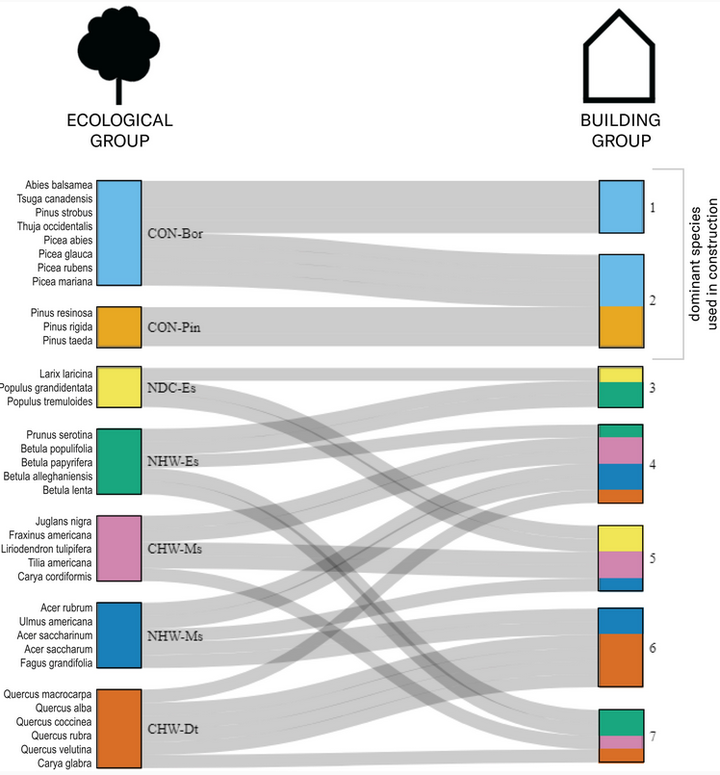A trait-based approach to both forestry and timber building can synchronize forest harvest and resilience

Abstract
Along with forest managers, builders are key change agents of forest ecosystems’ structure and composition through the specification and use of wood products. New forest management approaches are being advocated to increase the resilience and adaptability of forests to climate change and other natural disturbances. Such approaches call for a diversification of our forests based on species’ functional traits that will dramatically change the harvested species composition, volume, and output of our forested landscapes. This calls for the wood-building industry to adapt its ways of operating. Accordingly, we expand the evaluation of the ecological resilience of forest ecosystems based on functional diversification to include a trait-based approach to building with wood. This trait-based plant-building framework can illustrate how forecasted forest changes in the coming decades may impact and guide decisions about wood-building practices, policies, and specifications. We apply this approach using a fragmented rural landscape in temperate southeastern Canada. We link seven functional groups based on the ecological traits of tree species in the region to a similar functional grouping of building traits to characterize the push and pull of managing forests and wood buildings together. We relied on a process-based forest landscape model to simulate long-term forest dynamics and timber harvesting to evaluate how various novel management approaches will interact with the changing global environment to affect the forest-building relationships. Our results suggest that adopting a whole system, plant-building approach to forests and wood buildings, is key to enhancing forest ecological and timber construction industry resilience.